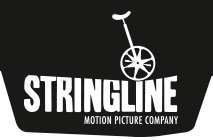How To Write A TV Commercial Script (Step-By-Step Guide)
Learning how to write a commercial is an excellent skill for any marketing manager, director, or businesses owner to have.
Effective TV commercials make a lasting impression on consumers and lead to sales, and it all starts with a great script.
Whether you write a commercial marketed towards other businesses or directly to consumers, there are certain steps to follow to ensure you produce a successful script. Let’s break down what you need to know when learning how to write a TV commercial script.
Step 1: Format Your Script
Writing a TV commercial script is very different from writing a screenplay for a film. Writing a screenplay involves using a specific scriptwriting software so that all formatting is consistent. However, for commercials, you can write your script in any word processor as long as you follow simple formatting standards.
Commercial scripts are typically split into two columns with a heading over the top.
The Heading: The heading contains all the necessary information about the project. Be sure to include:
- Name of the client
- Script’s title
- Your name
- Draft number
- Date submitted

The Visual Column: The left column in a commercial script denotes all visual elements. Typically, shots are listed in order with the shot length in brackets: “(:03)”. This column can include any visual elements that you envision in the commercial, including:
- Camera directions/angles
- On-screen text
- Graphics
The Audio Column: The right column outlines all audio elements. Like the visual column, list your audio elements in order with their time length. Audio elements can include:
- Dialog
- Music
- Sound effects
- Voiceovers
- Jingles
Step 2: Outline a Simple Story
While feature films are usually between 75 and 210 minutes long, TV commercials are only 30, 60, or 90 seconds (even shorter for social media ads). Due to the time limit alone, there isn’t room to try and execute a complicated story with multiple twists and turns. In a television commercial, simple stories are most effective. Before you start writing, think of a clear beginning, middle, and end of your script.
Beginning: Capture the audience with an emotional reaction
Middle: Introduce a problem
End: Solve the problem with a resolution
To hook potential customers with your TV ad, you must elicit an emotional reaction in your target audience. Let’s take a look at an example.
Solving Problems With Emotional Responses: Example
Perhaps you’re writing a TV commercial script for a video chatting app, and your target audience is parents of college students. The problem, or pain point, is that the parents miss their children terribly, which brings about the emotional response of sadness or longing. The introduction of the video chatting app solves their problem by allowing face-to-face communication with their children, eliciting happiness.
Step 3: Solidify the Tone
Think about the most memorable commercials you’ve seen. Effective TV commercials establish a tone of voice consistent with the client’s brand. As a scriptwriter, you are allowed to be creative. However, keep in mind that certain tones align best with certain products or companies.
For example, commercials for prescription medications pair well with a calming and positive tone.
Different types of ad tones include:
- Playful
- Sophisticated
- Soothing
- Energetic
- Trustworthy
- Dreary
- Light-hearted
- Comical
- Authoritative
- Nostalgic
- Romantic
Step 4: Maintain a Consistent Theme
Whether you’re writing multiple commercials for a client or you’re jumping in as a brand new writer, you want to maintain consistency across the client’s marketing materials. Most major brands have a strong overarching theme.
Theme can present as a consistent cast of characters (the GEICO gecko, Flo the Progressive Girl, the Energizer Bunny, etc.), recurring color schemes, or a uniform style across multiple commercials.
Step 5: Write an Effective Call to Action
The call to action (CTA) is an essential component of all successful marketing materials, including television commercials. A commercial CTA tells your target audience what action they should take once the commercial is finished. Typically, CTAs come at the end of a script. Be sure to use actionable, urgent language in your CTA.
Some examples include:
- “Visit [our website] today!”
- “Call us now for a free quote.”
- “Stop in today to take advantage of this limited-time offer.”
You may have noticed the words “today,” “now,” and “limited-time” in the example CTAs. When you advertise a product, service, or brand in a TV commercial, you want the target audience to take action immediately while having an emotional response.
Produce a Compelling Commercial With a Little Help From Your Friends at Stringline
Now that you know the five steps of writing a TV commercial script, don’t wait to get started. Whether you have a completed version of a commercial script that you’re ready to produce, or you are looking for collaborative help from film experts as you write your first few scripts, partner with a professional video production agency that cares.
From scriptwriting and storyboarding to shooting and editing, Stringline Pictures does it all. Check out our video production services and bring your commercial vision to life today!



